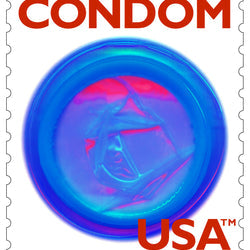People are concerned that Trump or his administration may want to cancel PRIDE Month. Well, this is definitely not true, so no need to worry. Pride month is going to be better than ever, no one can hold us down but ourselves. Plus, this is only my opinion, but I do not see Trump as a homophobe, after all he is a native New Yorker, but all kidding aside, is it reasonable and evidence-based to say that Trump has supported or enacted policies that have harmed or restricted the rights of transgender people? We know based on the recent changes, as president, Trump’s administration implemented several policies that were widely criticized as anti-transgender, including:
-
Military Ban: Reversed the Obama-era policy allowing transgender individuals to serve openly in the military.
-
Health Care Protections: Rolled back protections for transgender people under the Affordable Care Act, particularly those related to gender identity discrimination.
-
Education Policies: Withdrew federal guidance that protected transgender students' rights to use bathrooms that align with their gender identity.
-
HUD Rule Changes: Proposed rules that would allow shelters to deny access to transgender individuals based on sex assigned at birth.
Trump has made few public statements specifically targeting transgender people, but he has aligned himself with conservative activists and groups that advocate for restrictions on transgender rights. His campaign and political allies have also increasingly embraced rhetoric that frames transgender rights as part of a “culture war.”
We as a community need to continue the progress we have made as a community and continue to make. Some people within the community do not feel a sense of Pride. Many trans people do report feeling discriminated against or marginalized within the broader LGBTQ+ community, despite being part of it. This is a well-documented and ongoing issue.
Common Experiences of Discrimination Within the LGBTQ+ Community
-
Prioritization of LGB Issues:
The LGBTQ+ movement historically centered on the rights and visibility of cisgender gay and lesbian people, often sidelining trans-specific issues like gender-affirming healthcare, legal recognition, and violence against trans individuals. -
Transmisogyny:
Trans women, especially trans women of color, frequently report transmisogyny—a combination of transphobia and misogyny—even from within LGBTQ+ spaces. They may face exclusion, fetishization, or dismissal from both gay and lesbian communities. -
Tokenism and Erasure:
Trans people are sometimes included symbolically but excluded from leadership, decision-making, or meaningful representation. This can feel like performative inclusion rather than true solidarity. -
Microaggressions and Misgendering:
Even in LGBTQ+ spaces, trans people report being misgendered, questioned about their identity, or made to feel “less authentic” than cisgender members of the community. -
Division by Gender Norms:
Events or groups often split along binary gender lines (e.g., “women’s” or “men’s” spaces) without considering how to include nonbinary or gender-diverse people.
Does discrimination exist amongst the transgender community as well?
Discrimination or exclusion within the trans community against nonbinary people does happen. While the trans umbrella includes a wide range of gender identities—including nonbinary, genderqueer, agender, and more—not all trans people recognize or accept this diversity, and tensions do exist.
Common Forms of Discrimination or Marginalization
-
Gatekeeping “Real” Trans Identities
Some people (including trans men or trans women) may express beliefs like:-
"You're not really trans unless you're transitioning medically or socially."
-
"Being nonbinary is just a phase or a trend."
These attitudes invalidate nonbinary identities and mirror cisnormative thinking.
-
-
Visibility and Representation Gaps
Much of trans visibility in media, policy, and healthcare focuses on binary transition experiences. This can lead nonbinary people to feel invisible or secondary within the broader trans movement. -
Language and Community Spaces
Trans spaces and support groups often default to binary terms ("trans men and women"), leaving nonbinary people feeling unwelcome or erased. Some nonbinary people also report discomfort in spaces that expect a clear “before and after” narrative of gender. -
Healthcare Access Disparities
Some medical providers—and even trans-led health advocacy—may be less accommodating or affirming of nonbinary transition goals (e.g., top surgery without testosterone, or partial hormone therapy), reinforcing a binary medical model. -
Interpersonal Dismissiveness
Nonbinary people may experience misgendering not just from cisgender people, but from other trans people who see “they/them” pronouns or fluid identities as confusing or invalid.
Why This Happens
-
Internalized norms: Many people, including trans individuals, are socialized in a binary system. Some carry those ideas even as they challenge other aspects of gender.
-
Desire for legitimacy: Some trans people feel that embracing binary narratives helps gain social or political recognition and may view nonbinary identities as threatening to that progress.
-
Generational or cultural gaps: Older trans people or those from certain cultural backgrounds may have less exposure to nonbinary language or frameworks.
Yes, nonbinary people can and do face discrimination or invalidation from within the trans community. This reflects broader societal pressures toward gender conformity—but also highlights the need for more inclusive education, support, and leadership across the full spectrum of trans identities. The most affirming spaces are usually those that actively recognize and uplift nonbinary voices.
I think it is important that we focus on working together and accepting each other. Afterall acceptance and connection is what we all want, why would we not give something we ourselves want. We are all human and sometimes we make mistakes, make harsh judgements or are uneducated or ill informed, it happens, but recognize when you yourself are doing it. We are quick to point the finger but not so quick to go inside and ask ourselves the tough questions. So, let's do that and continue to question ourselves and why we believe what we believe. Let us also give others what we ourselves desire, acceptance, connection, and love.
Research and Advocacy Evidence
-
Studies and surveys, including those by GLAAD, the National Center for Transgender Equality, and Stonewall (UK), show significant rates of discrimination by other LGBTQ+ people, especially for trans people of color.
-
Some LGBTQ+ organizations have acknowledged this and are working to address internal bias and improve trans inclusion, but the issue remains widespread.






Leave a comment